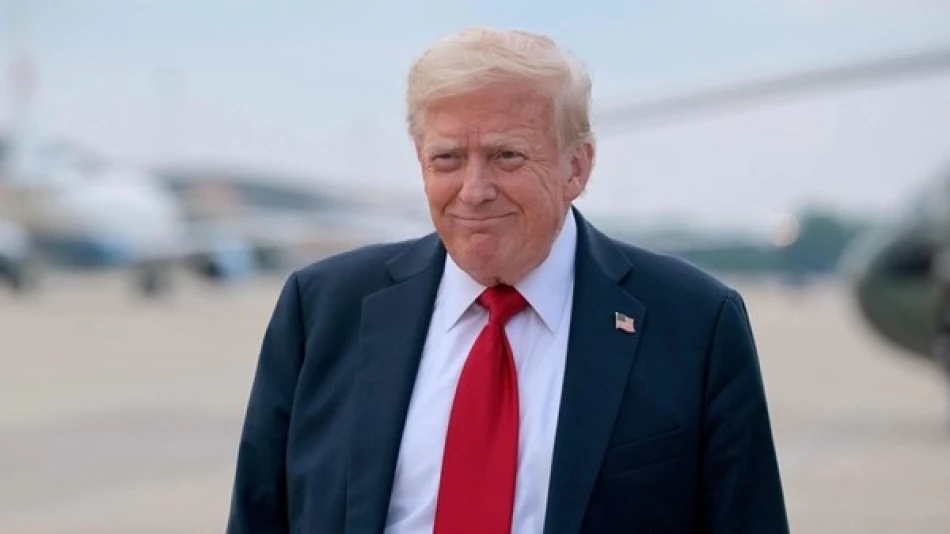
Former US President Trump Announces Trade Deal with the Philippines
Trump Secures Trade Deal with Philippines, Cuts Tariffs to 19% in Strategic Asia-Pacific Move
President Donald Trump announced a new trade agreement with the Philippines that reduces tariffs on Filipino imports from 20% to 19%, while securing what he describes as completely open market access for American goods. The deal, reached after White House negotiations with Philippine President Ferdinand Marcos Jr., represents Trump's first bilateral trade breakthrough since returning to office and signals his administration's focus on reshaping economic relationships in the strategically vital Asia-Pacific region.
The Deal's Strategic Timing
The agreement comes as Manila had joined other nations in warning against Trump's proposed universal 20% tariff on all imports, originally scheduled to take effect August 1st. Trump had previously threatened even steeper 17% duties specifically targeting Philippine exports, making the current 19% rate appear as a diplomatic compromise.
Trump characterized Marcos as a "very tough negotiator" during their White House meeting, suggesting the Philippines leveraged its strategic importance to secure better terms than what might await other trading partners. The timing is particularly significant as the U.S. seeks to strengthen ties with Southeast Asian allies amid growing competition with China in the region.
What This Means for U.S.-Philippine Economic Relations
Asymmetric Market Access
The deal's structure reveals Trump's transactional approach to trade policy. While Filipino goods still face substantial 19% tariffs entering the U.S. market, American exporters reportedly gain unfettered access to Philippine consumers. This arrangement mirrors similar agreements Trump pursued during his first term, where market access became a bargaining chip for tariff relief.
Historical Context
The Philippines has maintained strong economic and security ties with the United States since World War II, making it a natural candidate for preferential treatment. Unlike Trump's confrontational approach with China or Mexico, this agreement builds on decades of alliance partnership. Philippine exports to the U.S. include electronics, textiles, and agricultural products—sectors that would have faced significant pressure under the original 20% universal tariff.
Broader Implications for Trump's Trade Strategy
This bilateral success could serve as a template for Trump's broader trade agenda. By offering modest tariff reductions in exchange for expanded market access, the administration can claim victory while maintaining its protectionist stance toward larger economies like China and the European Union.
For investors and businesses, the deal suggests Trump may be more willing to negotiate with strategic allies than his campaign rhetoric indicated. Companies with Philippine operations or supply chains can expect more predictable trading conditions, while U.S. exporters gain a competitive advantage in a growing Southeast Asian market of over 100 million consumers.
Regional Power Dynamics
The agreement also carries geopolitical weight. As China continues expanding its economic influence across Southeast Asia through initiatives like the Belt and Road program, securing favorable trade terms with traditional allies like the Philippines helps the U.S. maintain its economic foothold in the region.
Unlike Singapore's comprehensive trade agreements or the UAE's strategic economic partnerships, this deal appears more focused on immediate bilateral gains rather than broader regional integration. However, it could signal Trump's willingness to offer economic incentives to countries that align with U.S. strategic interests, particularly those with significant military cooperation agreements.
The success of this arrangement will likely influence how other Southeast Asian nations approach their own trade negotiations with the Trump administration, potentially creating a domino effect of bilateral deals that reshape the region's economic landscape.
 Layla Al Mansoori
Layla Al Mansoori







